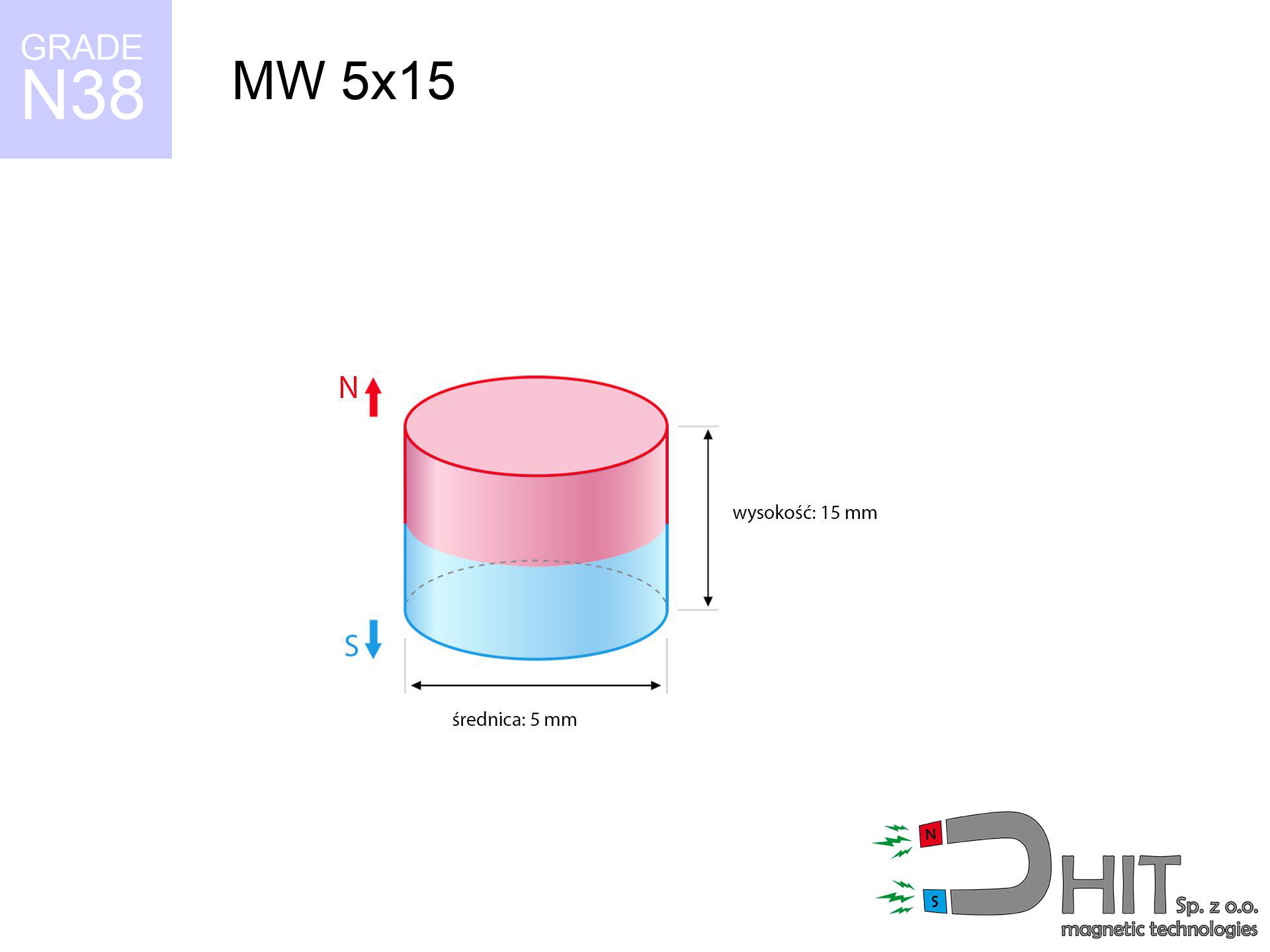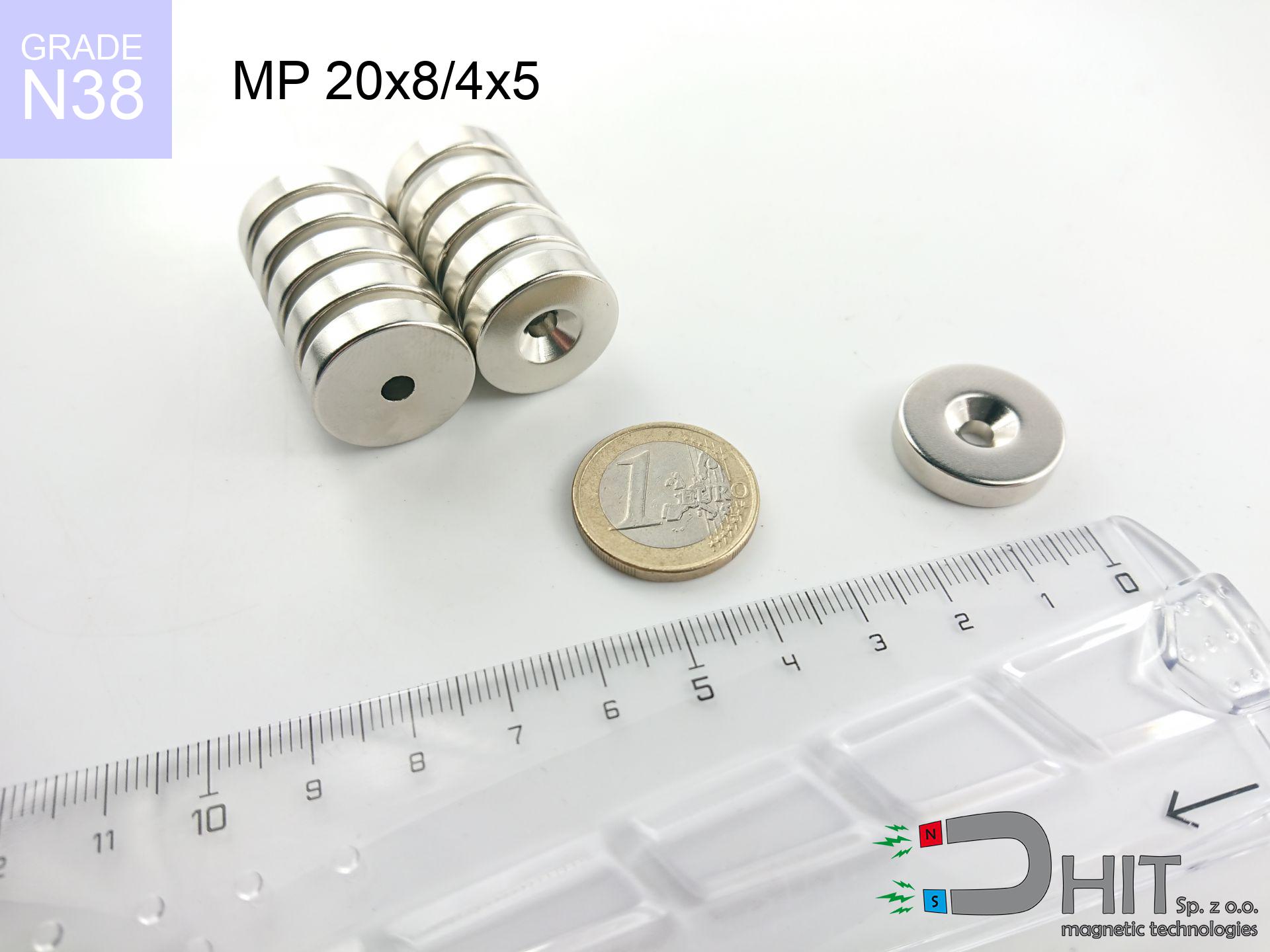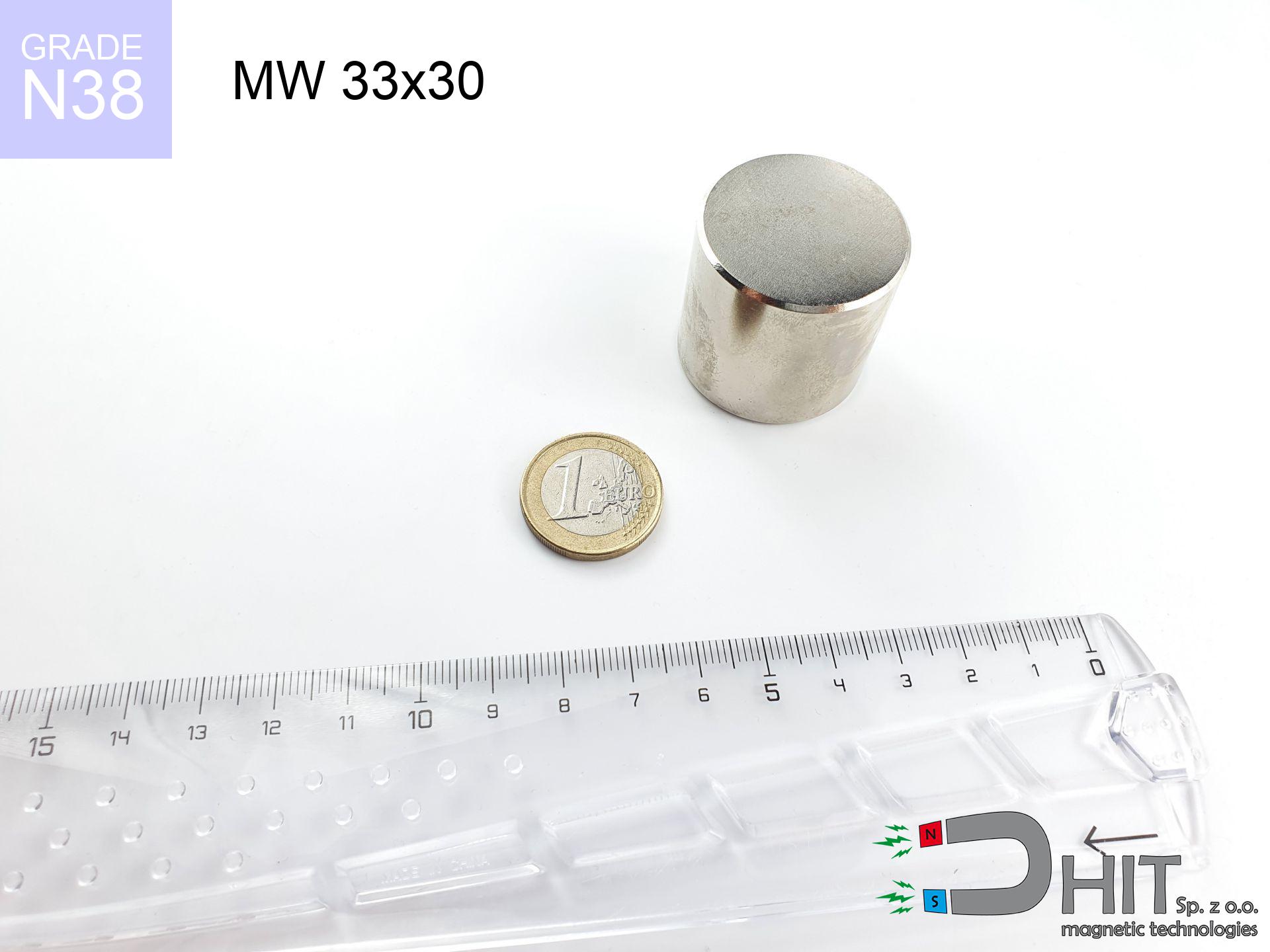MW 5x15 / N38 - neodymium magnet
cylindrical magnet
catalog number 010084
GTIN: 5906301810834
diameter Ø
5
mm [±0,1 mm]
height
15
mm [±0,1 mm]
magnetizing direction
↑ axial
capacity ~
4.15 kg / 40.70 N
magnetic induction ~
610.03 mT / 6,100 Gs
max. temperature
≤ 80
°C
catalog number 010084
GTIN: 5906301810834
diameter Ø
5 mm [±0,1 mm]
height
15 mm [±0,1 mm]
magnetizing direction
↑ axial
capacity ~
4.15 kg / 40.70 N
magnetic induction ~
610.03 mT / 6,100 Gs
max. temperature
≤ 80 °C
0.98 ZŁ gross price (including VAT) / pcs +
0.80 ZŁ net price + 23% VAT / pcs
bulk discounts:
need more quantity?Don't know what to choose?
Give us a call tel: +48 888 99 98 98 or write via contact form on our website. You can check the strength as well as the shape of neodymium magnet in our magnetic calculator force calculator
Orders placed by 2:00 PM will be shipped on the same business day.
Specification: cylindrical magnet 5x15 / N38 ↑ axial
Magnetic properties of the material N38
Physical properties of sintered neodymium magnets Nd2Fe14B
Moreover, although neodymium is a component of the strongest magnets, they are susceptible to corrosion in humid environments. For this reason, they are coated with a thin layer of gold to increase their durability. Interestingly that NdFeB neodymium magnets are about 13% lighter than SmCo magnets and, despite their power, easily break, which requires care during their handling. For this reason, any mechanical processing should be done before they are magnetized.
In terms of safety, there are several recommendations regarding the use of these magnets. It is advisable to avoid their use in acidic, basic, organic environments or where solvents are present, as well as in water or oil. Additionally, they can distort data on magnetic cards and hard drives, although data deletion using a neodymium magnet is not guaranteed.
In terms of properties in different environments, neodymium magnets are sensitive to corrosion, especially in humid conditions. Therefore, they are often covered with coatings, such as silver, to shield them from external factors and prolong their durability. High temperatures exceeding 130°C can result in a deterioration of their magnetic properties, although there are specific types of neodymium magnets that can withstand temperatures up to 230°C.
As for potential dangers, it is important to avoid using neodymium magnets in acidic environments, basic environments, organic or solvent environments, unless they are adequately insulated. Additionally, their use is not recommended in water, oil, or in an environment containing hydrogen, as they may lose their magnetic properties.
Find suggested articles
Advantages as well as disadvantages of neodymium magnets NdFeB.
Apart from immense power, neodymium magnets have the following advantages:
- They do not lose power over time - after 10 years, their power decreases by only ~1% (theoretically),
- They are highly resistant to demagnetization by external magnetic sources,
- By applying a shiny coating of nickel, gold, or silver, the element gains an aesthetic appearance,
- They possess very high magnetic induction on the surface of the magnet,
- Thanks to their high temperature resistance, they can operate (depending on the shape) even at temperatures up to 230°C and above...
- Thanks to the flexibility in shaping and the ability to adapt to specific requirements – neodymium magnets can be produced in various forms and dimensions, which expands the range of their possible uses.
- Key role in advanced technologically fields – are used in HDD drives, electric drive mechanisms, medical apparatus or very highly developed apparatuses.
Disadvantages of neodymium magnets:
- They can break when subjected to a powerful impact. If the magnets are exposed to impacts, we recommend using magnets in a protective case. The steel housing in the form of a holder protects the magnet from impacts and at the same time increases its overall strength,
- They lose strength at high temperatures. Most neodymium magnets experience permanent loss of strength when heated above 80°C (depending on the shape and height). However, we also offer special magnets with high temperature resistance, up to 230°C,
- Due to their susceptibility to corrosion in a humid environment, we recommend using waterproof magnets made of rubber, plastic, or other moisture-resistant materials when using them outdoors,
- The use of a cover or a magnetic holder is recommended due to the limited possibilities of manufacturing threads or complex shapes in the magnet
- Health risk associated with microscopic parts of magnets can be dangerous, when accidentally ingested, which is crucial in the context of child safety. Furthermore, miniscule components of these devices are able to hinder the diagnostic process in case of swallowing.
Exercise Caution with Neodymium Magnets
It is essential to maintain neodymium magnets away from youngest children.
Not all neodymium magnets are toys, so do not let children play with them. In such a situation, surgery is necessary to remove them. In the worst case scenario, it can result in death.
Magnets will attract to each other, so remember not to allow them to pinch together without control or place your fingers in their path.
Magnets will bounce and clash together within a radius of several to almost 10 cm from each other.
If you have a nickel allergy, avoid contact with neodymium magnets.
Studies show a small percentage of people have allergies to certain metals, including nickel. An allergic reaction often manifests as skin redness and rash. If you have a nickel allergy, you can try wearing gloves or simply avoid direct contact with nickel-plated neodymium magnets.
Do not bring neodymium magnets close to GPS and smartphones.
Neodymium magnets are a source of intense magnetic fields that cause interference with magnetometers and compasses used in navigation, as well as internal compasses of smartphones and GPS devices.
Neodymium magnets are the strongest magnets ever invented. Their power can surprise you.
Familiarize yourself with our information to correctly handle these magnets and avoid significant swellings to your body and prevent disruption to the magnets.
Dust and powder from neodymium magnets are flammable.
Do not attempt to drill into neodymium magnets. Mechanical processing is also not recommended. If the magnet is crushed into fine powder or dust, it becomes highly flammable.
Keep neodymium magnets away from people with pacemakers.
Neodymium magnets produce strong magnetic fields that can interfere with the operation of a heart pacemaker. However, if the magnetic field does not affect the device, it can damage its components or deactivate the device when it is in a magnetic field.
Magnets made of neodymium are extremely fragile, resulting in their cracking.
In the event of a collision between two neodymium magnets, it can result in them getting chipped. They are coated with a shiny nickel plating similar to steel, but they are not as hard. At the moment of collision between the magnets, small sharp metal pieces can be propelled in various directions at high speed. Eye protection is recommended.
You should keep neodymium magnets at a safe distance from the wallet, computer, and TV.
Strong magnetic fields emitted by neodymium magnets can damage magnetic storage media such as floppy disks, credit cards, magnetic ID cards, cassette tapes, video tapes, or other devices. In addition, they can damage televisions, VCRs, computer monitors, and CRT displays. You should especially avoid placing neodymium magnets near electronic devices.
Neodymium magnets can demagnetize at high temperatures.
Despite the general resilience of magnets, their ability to retain their magnetic strength can be influenced by factors like the type of material used, the magnet's shape, and the intended purpose for which it is employed.
To raise awareness of why neodymium magnets are so dangerous, see the article titled How dangerous are powerful neodymium magnets?.






![search holder 67x28 [M8+M10] GW F120 Lina / N38 search holder 67x28 [M8+M10] GW F120 Lina / N38](https://cdn3.dhit.pl/graphics/products/ump-67x28-m8+m10-gw-f-120+-lina-xiw.jpg)

